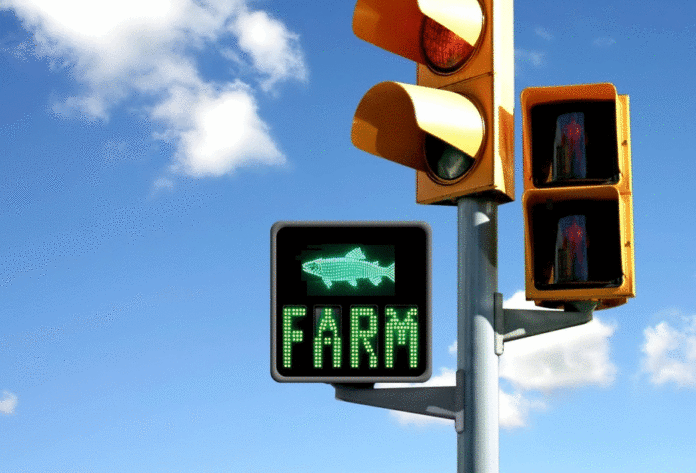There is no evidence that Norway’s traffic light system has safeguarded the future of wild salmon in Norway says report.
A new report by Dr. Martin Jaffa of Callander McDowell, titled “The Traffic Light System for Regulating Salmon Farming in Norway – A reassessment,” has challenged the efficacy of Norway’s Traffic Light System in managing salmon farming and protecting wild salmon.
The report, released in April 2024, asserts that the system has failed to show any benefits and is flawed in its scientific basis.
“This analysis of the Traffic Light System has found that this form of regulation of the salmon farming industry has no redeeming features. There is no evidence that its application has safeguarded the future of wild salmon in Norway,” Jaffa writes in his introduction to the report.
Jaffa is one of the founders of Callander McDowell, a consultancy that specializes in aquaculture and fisheries. He holds a Ph.D. in fish physiology and biochemistry.
The report highlights several key issues with the current regulation system:
- Scientific Understanding: The methodology used lacks a fundamental understanding of parasite ecology, specifically the nature of sea lice distribution among fish populations.
- Sampling Flaws: Sampling methods are inadequate and often not representative of the wild fish population, with some areas showing extreme variability in the number of fish sampled.
- Modeling Limitations: The reliance on models that treat sea lice as particles rather than living organisms is flawed, failing to accurately reflect their real-world behavior.
- Need for Inclusive Discussion: The report calls for a broader discussion involving both the industry and scientific community to reassess the narrative around sea lice.
According to Jaffa’s analysis, a fundamental flaw in the Traffic Light System is the inadequate understanding of parasite ecology amongst those conducting research around the impact of salmon farming, specifically the distribution of sea lice among fish populations.
The report details that sea lice are dispersed in an aggregated manner, meaning most host sea trout and salmon carry few or no sea lice, posing little risk to their survival.
“Instead of parasites being randomlydistributed within the host population (as might be expected) they tend to be over-dispersed i.e. a few hosts harbour large numbers of parasites and many hosts harbour only a few. That this type of frequency distribution is a major characteristic of parasitism was first postulated by Crofton (1971) and has since been confirmed by numerous studies on many host-parasite systems,” Jaffa quotes from a parasitology textbook, to make his point:
“Parasites are distributed differently to other animals and high level of infestations are a natural occurrence in parasite populations. In the case of sea lice, such high numbers of parasites occur regardless of the presence or absence of a salmon farm.”
This contradicts the assumptions underlying the current regulatory framework.
The report further highlights the inadequacies in the sampling methods used to assess sea lice populations, which tend to focus on a small number of fish that naturally exhibit higher lice loads. This approach, Jaffa argues, does not provide an accurate representation of the overall fish population.
Dr. Jaffa also criticizes the reliance on modeling techniques that fail to accurately simulate the real-world behavior of sea lice, treating them as inert particles rather than living organisms. This misrepresentation leads to ineffective regulatory measures. The report notes a general reluctance within the scientific community to engage in discussions that could challenge the prevailing narrative about sea lice management.
The analysis underscores an urgent need to reassess how sea lice are understood and managed within the industry and calls for a broader involvement of industry stakeholders and business leaders in future regulatory discussions.









